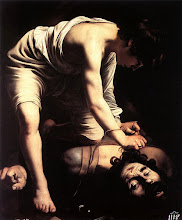By David Paulin
The New York Times outraged many readers by outing one of Jerry Sandusky's alleged rape victims in an article that -- while not actually naming the alleged victim -- nevertheless revealed so much about him that his identify could be determined with a simple Google search.
On Sunday, the Times' public editor joined the chorus of disgust. Arthur S. Brisbane, the paper's in-house watchdog for newsroom ethics, rebuked the paper for violating a fundamental journalistic cannon -- failing to protect the identify of an alleged rape victim. It's a journalistic cannon that's rarely breached without compelling reasons.
So why did the Times do it? Specifically, how come it ignored what the Society of Professional Journalists, in its code of ethics, characterizes as a fundamental duty to "minimize harm" when reporting sensitive issues such as sexual assaults? In the Times' case, it was purely for the "transient benefits" of telling a good story, according to Brisbane's 1,136-word column, "Name Withheld, but Not His Identity."
In coming to this damning conclusion, Brisbane gathered opinions from a number of sources, including two unapologetic Times editors: Philip B. Corbett, associate managing editor for "standards"; and Joe Sexton, the sports editor whose department produced the Nov. 22 article.
Brisbane also quoted Michael Boni, the lawyer for the victim who was outed, who criticized the Times' story. "These guys knew it would out the kid," he said.
And at various points, Brisbane referred to a column by David Newhouse, editor of The Patriot-News in Harrisburg, Pennsylvania, which has extensively covered the Sandusky story.
In his widely cited column published Nov. 23, Newhouse said his paper deliberately withheld details about Sandusky's alleged victim in order to protect the boy's identity. And he harshly criticized the Times for failing to do the same in respect to "Victim One," as the boy is known in the grand jury report.
Most significantly, Newhouse described an overarching reason for protecting Victim One's anonymity -- a reason Brisbane quoted when describing the potential for harm the Times caused by effectively 'outing' the boy.
As Newhouse explained:
"It is no accident that Victim One was only the second boy to come forward to authorities in what is alleged to have been more than 15 years of assaults by Sandusky. Stories like these, if anything, could discourage future victims from speaking up."
It was a persuasive argument, Brisbane observed -- one backed up by experts on sex crime victimization such as Dean Kilpatrick, a clinical psychologist at the Medical University of South Carolina and director of its National Crime Victims Center.
"Most victims, based on the research, are very reluctant to report," he told Brisbane. He said that "some of the top concerns are: 'I am afraid,' 'I don't want other people to find out,' 'I am afraid that people will blame me for what happened.'"
Brisbane added: "Because of this, Mr. Kilpatrick said, surveys show that fewer than one in five rape cases are ever reported to authorities. Sexual crime is the most underreported category of serious crime in the United States."
In his final rebuke, Brisbane wrote: "The traditional mandate to preserve privacy is there to protect sex crime victims -- a broader social purpose that, in my mind, outweighs the transient benefits of a single human-interest story."
The New York Times has a storied history, and during a golden era of American journalism -- during the late 1800s and early to mid-1900s -- it distinguished itself from myriad other New York City newspapers with its level-headed judgment and good taste. Those virtues were summed up in its motto printed on the upper left-hand corner of its front page and dating to 1896: "All the News that's Fit to Print."
Perhaps the Times needs a new motto to better reflect the news that it now considers fit to print.
Originally published at The American Thinker





No comments:
Post a Comment